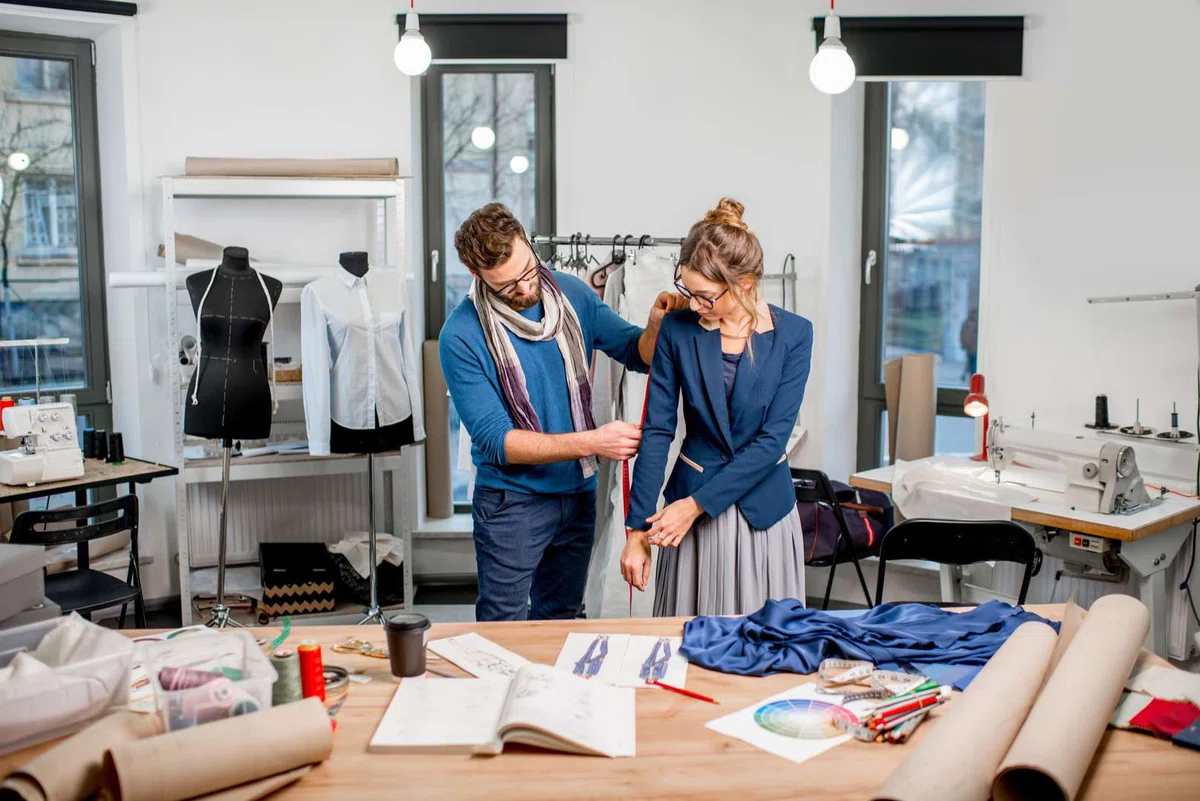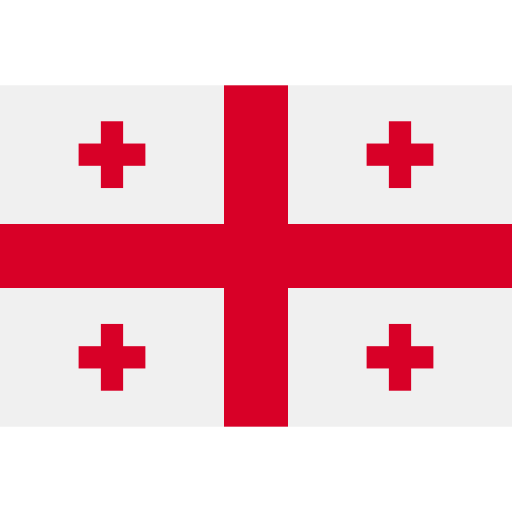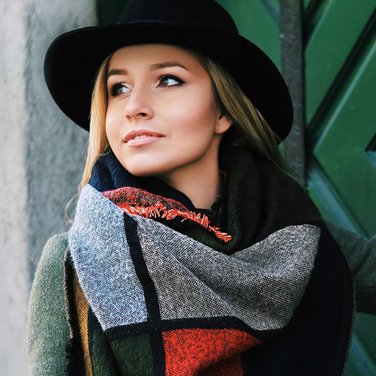
The Rise of Georgian Designers: How Tbilisi Became a Fashion Hub
Discover how Tbilisi has emerged as a fashion capital in the post-Soviet space. Explore the stories of top Georgian designers, their global influence, and the unique blend of culture and style that defines Georgian fashion.
Georgian Designers: How Tbilisi Became the Fashion Capital of the Post-Soviet Space
Tbilisi, the capital of Georgia, has earned the status of a fashion capital in the post-Soviet space over the last few years. In this article, we will explore what makes Georgian fashion unique, which designers influence the global industry, and how the cultural features of Georgia shape its style.
Historical Context and Cultural Roots of Georgian Fashion
Georgia has always been known for its traditions and rich culture, which inevitably found reflection in modern fashion. A blend of ancient customs with contemporary aesthetics creates a unique style that distinguishes Georgian designers from other world fashion houses. From traditional garments to modern interpretations of classic silhouettes, Georgian fashion draws on its heritage, creating clothing that speaks to both the past and the future.
Designers like Demna Gvasalia, founder of Vetements, have brought these cultural nuances into the global spotlight. His bold and subversive styles reframe traditional Georgian aesthetics, transforming them into something universally appealing while maintaining the distinct flavor of Georgian fashion.
Tbilisi: A Hub of Creativity
Tbilisi has become a true hub for creative minds, especially in the fashion industry. Designers such as David Koma, Aleksandre Akhalkatsishvili, and George Keburia have put Georgian fashion on the world map. Their designs can now be seen on celebrities and red carpets globally. These designers are not only ambassadors of Georgian fashion but also innovators who constantly push the boundaries of style.
The growing presence of fashion events like Mercedes-Benz Fashion Week Tbilisi has solidified the city’s position as a creative epicenter. Tbilisi’s vibrant atmosphere fosters collaboration, innovation, and an eclectic mix of traditional and modern influences.
The Influence of Subcultures and Club Life on Georgian Fashion
Georgian club culture has also played a significant role in the development of fashion trends. These spaces have become a breeding ground for creative experiments and collaborations between designers, musicians, and artists. Brands like Berhasm and Situationist have drawn inspiration from Tbilisi's nightlife and club aesthetic, bringing a raw, urban edge to Georgian fashion.
Subcultures thriving in Tbilisi’s club scene blur the lines between fashion, music, and art, creating a dynamic environment where style constantly evolves. Designers absorb and reinterpret these influences, offering fresh perspectives on urban and avant-garde fashion.
Export: The Key to Success
Export plays a crucial role in the development of the Georgian fashion industry. Designers like Anouki, Chubika, and Situationist are recognized beyond Georgia and have garnered acclaim on international runways. Georgian brands frequently participate in global fashion shows, which helps them expand their market reach.
The international demand for Georgian fashion stems from its uniqueness—an eclectic mix of tradition, innovation, and cutting-edge style. Designers who succeed in navigating both local and global markets find themselves on a trajectory toward long-term success.
Challenges and Obstacles in the Georgian Fashion Industry
Georgian designers face several challenges, such as a lack of production infrastructure and financial resources. Many brands, such as Five To Ten and Funduki, are forced to outsource production to other countries, which increases costs and extends production times.
Additionally, limited state support and funding make it difficult for emerging designers to scale their businesses. Despite these hurdles, the resilience and creativity of Georgian designers keep the industry moving forward, paving the way for future growth.
Concept Stores: A Unique Consumer Experience
Concept stores like IERI STORE play a vital role in promoting Georgian fashion. These boutiques are often hidden from public view, creating an air of exclusivity. Here, shoppers can find collections from designers such as George Keburia, Tata Naka, and Lado Bokuchava.
These stores not only offer a curated shopping experience but also serve as platforms for emerging designers. By showcasing limited edition collections, concept stores provide a space for creativity to thrive while offering consumers a taste of Georgian luxury.
Men’s Fashion: An Overlooked Niche
Men's fashion in Georgia, despite its potential, is still underdeveloped. However, designers like Muzaradi and Khevsuruli are making strides in this direction, offering original solutions in men's clothing. They experiment with tailoring, materials, and traditional motifs, seeking to carve out a niche for themselves in a market that has historically been overlooked.
As the industry continues to grow, the demand for innovative men’s fashion will likely increase, providing new opportunities for designers to explore this niche.
The Role of Young Designers and Fashion Education
Young designers like Lili Archive and Tiko Paksa represent the next generation of Georgian fashion. However, despite their talent, they often lack access to international internships and support. The importance of education and knowledge exchange with international colleagues is a crucial factor for the industry’s growth.
Educational institutions are slowly beginning to incorporate fashion programs that offer more structured paths for aspiring designers. However, for the industry to thrive, there is a need for better resources, mentorship programs, and exposure to global fashion markets.
Exclusive Accessories and Footwear: Expanding the Range
Many Georgian brands, such as Aleksander Siradekian, Ketevan Studio, and Moule Jewellery, also create accessories and footwear, which have become an essential part of the Georgian fashion scene. They offer unique products that blend tradition with modernity.
From intricate jewelry pieces to stylish, hand-crafted shoes, these designers provide luxury items that resonate with both local and international consumers, adding another layer of sophistication to Georgian fashion.
State Support and Industry Development
Despite financial difficulties, the state is taking steps to support the Georgian fashion industry. Some designers, such as Prenom and Zarqua, have already started taking advantage of these opportunities to enter new markets.
Government-backed initiatives and international partnerships could potentially unlock new growth for Georgian designers, enabling them to compete more effectively on the global stage.
Exclusive Collections and the Luxury Segment
Brands like Sofio Gongli and Tatuna are actively working in the luxury segment, offering exclusive clothing collections. Georgian designers aim to create unique pieces that attract attention from both local and international buyers.
The luxury segment is growing, and with the right support, these designers can solidify their place in the world of high fashion, making a name for themselves among the elite of the fashion industry.
Conclusion: The Future of Georgian Fashion
Georgian fashion is on the verge of significant changes. Each year, Georgian designers become more recognizable on the global stage. Tbilisi continues to be a source of inspiration and a place where new ideas and unique talents are born.
With its rich cultural heritage, growing international presence, and innovative designers, the future of Georgian fashion looks bright. As more designers gain global recognition, the world will continue to turn to Tbilisi for the latest in creativity and style.
Georgian designers: how Tbilisi became a fashion capital and opened a unique style to the world
Tbilisi, the capital of Georgia, has earned the status of a fashion capital in the post-Soviet space over the last few years. In this article, we will explore what makes Georgian fashion unique, which designers influence the global industry, and how the cultural features of Georgia shape its style.
Historical Context and Cultural Roots of Georgian Fashion
Georgia has always been known for its traditions and rich culture, which inevitably found reflection in modern fashion. A blend of ancient customs with contemporary aesthetics creates a unique style that distinguishes Georgian designers from other world fashion houses. From traditional garments to modern interpretations of classic silhouettes, Georgian fashion draws on its heritage, creating clothing that speaks to both the past and the future.
Designers like Demna Gvasalia, founder of Vetements, have brought these cultural nuances into the global spotlight. His bold and subversive styles reframe traditional Georgian aesthetics, transforming them into something universally appealing while maintaining the distinct flavor of Georgian fashion.
Tbilisi: A Hub of Creativity
Tbilisi has become a true hub for creative minds, especially in the fashion industry. Designers such as David Koma, Aleksandre Akhalkatsishvili, and George Keburia have put Georgian fashion on the world map. Their designs can now be seen on celebrities and red carpets globally. These designers are not only ambassadors of Georgian fashion but also innovators who constantly push the boundaries of style.
The growing presence of fashion events like Mercedes-Benz Fashion Week Tbilisi has solidified the city’s position as a creative epicenter. Tbilisi’s vibrant atmosphere fosters collaboration, innovation, and an eclectic mix of traditional and modern influences.
The Influence of Subcultures and Club Life on Georgian Fashion
Georgian club culture has also played a significant role in the development of fashion trends. These spaces have become a breeding ground for creative experiments and collaborations between designers, musicians, and artists. Brands like Berhasm and Situationist have drawn inspiration from Tbilisi's nightlife and club aesthetic, bringing a raw, urban edge to Georgian fashion.
Subcultures thriving in Tbilisi’s club scene blur the lines between fashion, music, and art, creating a dynamic environment where style constantly evolves. Designers absorb and reinterpret these influences, offering fresh perspectives on urban and avant-garde fashion.
Export: The Key to Success
Export plays a crucial role in the development of the Georgian fashion industry. Designers like Anouki, Chubika, and Situationist are recognized beyond Georgia and have garnered acclaim on international runways. Georgian brands frequently participate in global fashion shows, which helps them expand their market reach.
The international demand for Georgian fashion stems from its uniqueness—an eclectic mix of tradition, innovation, and cutting-edge style. Designers who succeed in navigating both local and global markets find themselves on a trajectory toward long-term success.
Challenges and Obstacles in the Georgian Fashion Industry
Georgian designers face several challenges, such as a lack of production infrastructure and financial resources. Many brands, such as Five To Ten and Funduki, are forced to outsource production to other countries, which increases costs and extends production times.
Additionally, limited state support and funding make it difficult for emerging designers to scale their businesses. Despite these hurdles, the resilience and creativity of Georgian designers keep the industry moving forward, paving the way for future growth.
Concept Stores: A Unique Consumer Experience
Concept stores like IERI STORE play a vital role in promoting Georgian fashion. These boutiques are often hidden from public view, creating an air of exclusivity. Here, shoppers can find collections from designers such as George Keburia, Tata Naka, and Lado Bokuchava.
These stores not only offer a curated shopping experience but also serve as platforms for emerging designers. By showcasing limited edition collections, concept stores provide a space for creativity to thrive while offering consumers a taste of Georgian luxury.
Men’s Fashion: An Overlooked Niche
Men's fashion in Georgia, despite its potential, is still underdeveloped. However, designers like Muzaradi and Khevsuruli are making strides in this direction, offering original solutions in men's clothing. They experiment with tailoring, materials, and traditional motifs, seeking to carve out a niche for themselves in a market that has historically been overlooked.
As the industry continues to grow, the demand for innovative men’s fashion will likely increase, providing new opportunities for designers to explore this niche.
The Role of Young Designers and Fashion Education
Young designers like Lili Archive and Tiko Paksa represent the next generation of Georgian fashion. However, despite their talent, they often lack access to international internships and support. The importance of education and knowledge exchange with international colleagues is a crucial factor for the industry’s growth.
Educational institutions are slowly beginning to incorporate fashion programs that offer more structured paths for aspiring designers. However, for the industry to thrive, there is a need for better resources, mentorship programs, and exposure to global fashion markets.
Exclusive Accessories and Footwear: Expanding the Range
Many Georgian brands, such as Aleksander Siradekian, Ketevan Studio, and Moule Jewellery, also create accessories and footwear, which have become an essential part of the Georgian fashion scene. They offer unique products that blend tradition with modernity.
From intricate jewelry pieces to stylish, hand-crafted shoes, these designers provide luxury items that resonate with both local and international consumers, adding another layer of sophistication to Georgian fashion.
State Support and Industry Development
Despite financial difficulties, the state is taking steps to support the Georgian fashion industry. Some designers, such as Prenom and Zarqua, have already started taking advantage of these opportunities to enter new markets.
Government-backed initiatives and international partnerships could potentially unlock new growth for Georgian designers, enabling them to compete more effectively on the global stage.
Exclusive Collections and the Luxury Segment
Brands like Sofio Gongli and Tatuna are actively working in the luxury segment, offering exclusive clothing collections. Georgian designers aim to create unique pieces that attract attention from both local and international buyers.
The luxury segment is growing, and with the right support, these designers can solidify their place in the world of high fashion, making a name for themselves among the elite of the fashion industry.
Conclusion: The Future of Georgian Fashion
Georgian fashion is on the verge of significant changes. Each year, Georgian designers become more recognizable on the global stage. Tbilisi continues to be a source of inspiration and a place where new ideas and unique talents are born.
With its rich cultural heritage, growing international presence, and innovative designers, the future of Georgian fashion looks bright. As more designers gain global recognition, the world will continue to turn to Tbilisi for the latest in creativity and style.
Questions and Answers about Georgian Designers and Fashion Industry
How do Georgian designers achieve international recognition?
Georgian designers achieve international recognition through a unique blend of tradition and innovation. They actively participate in international fashion shows, such as Paris Fashion Week and Milan Fashion Week. Designers like David Koma, Demna Gvasalia, and Anouki have become well-known for their original approaches, which distinguish their collections from others.
In addition to participating in shows, Georgian brands often collaborate with international celebrities and stylists. For example, David Koma regularly creates outfits for global stars like Beyoncé and Rihanna. Demna Gvasalia, the founder of Vetements and creative director of Balenciaga, uses his Georgian roots and cultural influences in his collections, gaining global attention.
Furthermore, participation in concept stores and international showrooms allows Georgian designers to showcase their work to a wider audience, expanding their recognition beyond the country.
What challenges does the Georgian fashion industry face?
One of the main problems in the Georgian fashion industry is the lack of production infrastructure within the country. Many designers are forced to outsource the production of their collections to Turkey, Italy, or China, which increases costs and makes quality control difficult. For example, brands like Five To Ten and Funduki face difficulties in manufacturing as Georgia lacks factories that can provide the necessary volume and quality of production.
Financial difficulties are another challenge. Many young designers lack the funds to participate in international shows or hire staff. The domestic market in Georgia is too small for large-scale sales, so Georgian designers focus on export, which requires additional investments in marketing and logistics.
There is also the problem of insufficient education in fashion design. Local educational programs do not always meet international standards, forcing many designers to seek opportunities for further training abroad.
Which Georgian brands are known for their luxury collections?
Georgian fashion is actively developing in the luxury segment, and some designers have already gained international fame. One of the most famous brands is Tatuna, which specializes in couture collections. Her work is characterized by complex tailoring, the use of high-quality materials, and non-standard design solutions.
Sofio Gongli is also active in the luxury segment, creating exclusive dresses and suits for an elite audience. Her collections are often featured on international runways and attract attention due to their refined aesthetics and bold design choices.
Aleksander Siradekian is a brand specializing in luxury footwear. His high-heeled shoes have become the brand’s signature item and are popular among those seeking exclusive and luxurious products.
How does Tbilisi's club culture influence the development of fashion in Georgia?
Tbilisi's club culture has a significant impact on the development of fashion in the country. In the 1990s, after the collapse of the Soviet Union, clubs became not only places of entertainment but also spaces for self-expression, where young people could experiment with clothing and style. Today, clubs like Bassiani and Khidi continue to be creative hubs, inspiring designers to create collections that reflect the free spirit and aesthetics of nightlife.
Brands like Berhasm and Situationist actively use elements of club culture in their collections. Their clothing often includes elements of street fashion, bold decisions, and unconventional forms, which attract both local and international audiences.
Clubs have become meeting places for creative people where new ideas and trends are born. The influence of Tbilisi's nightlife is evident not only in clothing but also in accessories, makeup, and style, making Georgian fashion truly unique.
How important are concept stores for Georgian designers?
Concept stores play a crucial role in promoting Georgian designers, providing them with an opportunity to showcase their work in exclusive and unique spaces. One of the most famous concept stores in Tbilisi is IERI STORE, which specializes in selling collections by local designers like George Keburia, Tata Naka, and Lado Bokuchava.
Concept stores offer customers not just clothing but a whole cultural experience. These stores are often hidden from the general public, creating a sense of exclusivity and elitism. This attracts an audience looking for unique pieces that cannot be found in regular stores. Concept stores also serve as platforms for the younger generation of designers, giving them access to a wider audience and opportunities to make a name for themselves internationally.
Which Georgian brands are actively developing men's fashion?
Although men's fashion in Georgia remains relatively underdeveloped compared to women's, some brands are already making strides in this direction. For example, Muzaradi and Khevsuruli offer unique solutions for men's wardrobes, using ethnic motifs and drawing inspiration from the cultural heritage of Georgia's mountainous regions.
These brands show that men's fashion can be just as interesting and diverse. Muzaradi, for instance, integrates elements of national clothing into its collections, adapting them to modern trends. Khevsuruli focuses on materials and textures, creating items that combine both tradition and innovation.
In recent years, there has been growing interest in men's fashion on the Georgian fashion scene, and these designers are playing a key role in its development.
How do Georgian designers incorporate cultural traditions into their collections?
Georgian designers actively draw inspiration from the rich cultural heritage of their country. National patterns, traditional sewing techniques, and elements of folk costumes are reinterpreted in modern collections, creating a unique style that captures the attention of international audiences.
Brands like Khevsuruli and Sidonia Nun emphasize the use of ethnic motifs and cultural symbols. For example, Sidonia Nun's collections feature elements of Caucasian patterns and traditional embroidery, reimagined in a contemporary way. This creates unique looks that combine ancient traditions with current fashion trends.
This integration of cultural elements allows Georgian fashion to stand out among other global fashion houses and maintain its identity in the global industry.
How do young designers receive support and funding to develop their brands?
For many young designers in Georgia, one of the main challenges is finding funding and support in the early stages of brand development. The government has begun taking steps to support the industry by providing grants and subsidies for participation in international fashion shows. These measures help young designers, such as Lili Archive and Tiko Paksa, gain access to global markets and make a name for themselves internationally.
Additionally, there are private funds and organizations that support Georgian designers. For example, participation in exchange programs with foreign colleagues allows young talents to gain new knowledge and develop their skills. International fashion events also play a key role, where Georgian designers can showcase their work and attract the attention of potential investors and buyers.
What makes accessories and footwear from Georgian designers unique?
Accessories and footwear created by Georgian designers stand out for their attention to detail and high-quality craftsmanship. Brands like Aleksander Siradekian, Moule Jewellery, and Ketevan Studio create unique products that combine traditional motifs and modern trends.
For instance, Aleksander Siradekian is known for his elegant high-heeled shoes, which attract attention with their refinement and sophisticated design. His work is often seen at international fashion shows and red carpets. Moule Jewellery offers exclusive handmade jewelry, where every element is carefully thought out and crafted with great skill.
These accessories and footwear have become an integral part of the Georgian fashion scene, attracting the attention of both local and international buyers who value unique and original pieces.
Why has Tbilisi become the fashion capital of the post-Soviet space?
Tbilisi has become the fashion capital of the post-Soviet space due to a unique combination of cultural influences, historical heritage, and the creative potential of local designers. The city brings together both Eastern and Western traditions, which allows for the creation of unusual and vibrant fashion solutions.
In addition, Tbilisi’s vibrant nightlife and club culture play a key role, inspiring designers to experiment and find new forms of self-expression. Tbilisi has become a true hub for creative minds, bringing together fashion designers, artists, musicians, and photographers. This creative union allows a unique fashion industry to develop that stands out among other cities in the post-Soviet space.
Thanks to the participation of Georgian designers in international fashion weeks and shows, such as Paris Fashion Week, the city strengthens its reputation as a place where new trends and ideas are born.







28 comments
Log in to leave a comment